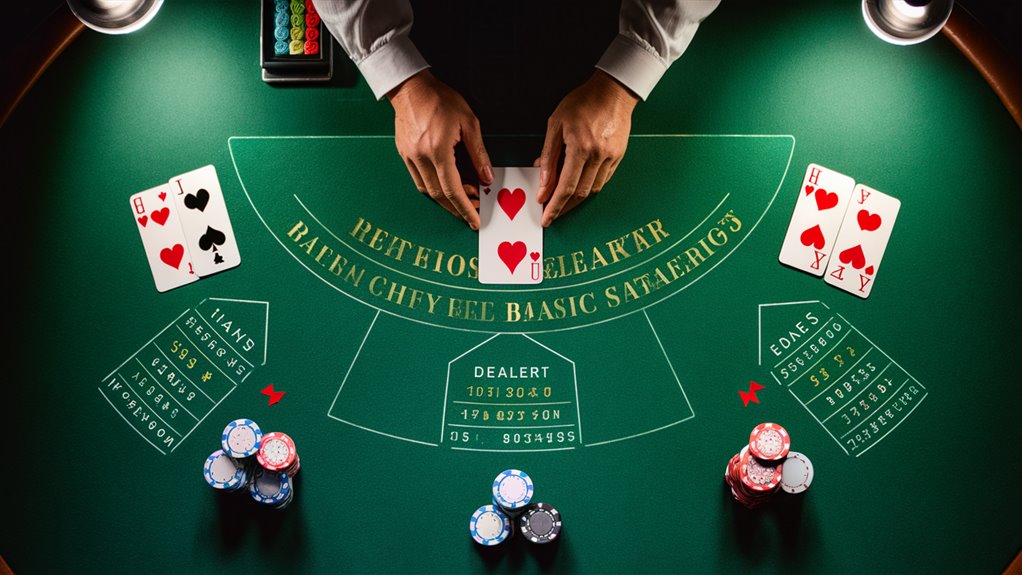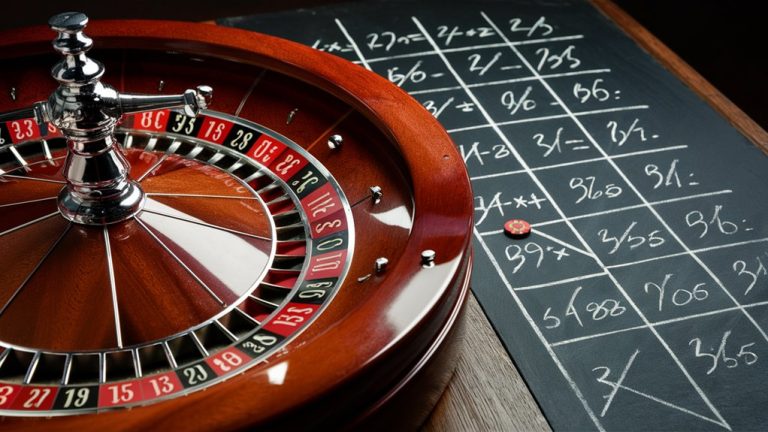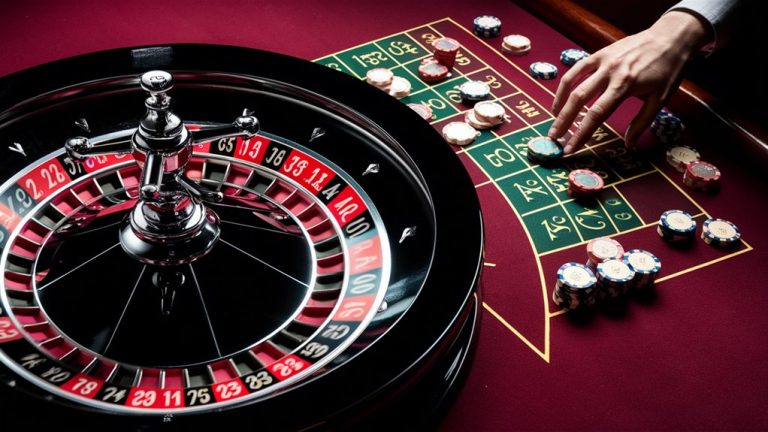
The Simple Math Behind Blackjack: A Math Breakdown

The Role of Chance in Blackjack
The game of blackjack leans heavily on exact math counts and stats of chance. Each choice at the blackjack space comes from deeply thought-out odds that shape the best ways to play.
Main Stats to See
Dealer bust rates give vital math facts:
- Dealers bust 42% of plays when they show a 6
- Just 17% bust chance when they show an Ace
- These rates push how we plan basic plays
Deep Math Ideas
Tracking Cards and Future Gains
Card tracking methods work by watching cards played, setting up a math plan for choosing good times to act. Future Gain (EV) sums show the best plays:
- Hitting 16 when the dealer shows 10: -48% EV
- Staying on 16 when the dealer shows 10: -54% EV
Pair Split Math
Splitting pairs is based on stats:
- Two 8s vs dealer’s 9: 38% win chance when split
- Playing as 16: 25% win chance
- Math edge: 13% better by splitting
Math Rules and Odds in the Game
The math core of blackjack shows clear patterns from science such as:
- Chance sums
- Stat checks
- Future value sums
- Win rate percentages
These math roots show why blackjack plans are not just guesses but proven ways for smart play.
Playing the Odds in Blackjack
Getting Why Blackjack Odds Matter: Stats Breakdown
Core Math of Blackjack
A basic deck setup of 312 cards in six decks is central.
The first chance to draw any one card is 1/312. These odds shift as cards get played.
Knowing these odds moves is key to smart play.
Dealer Bust Chances
How often dealers bust changes a lot based on their open card:
- 42% chance to bust with a 6 showing
- 17% chance to bust with an Ace showing
- In-between odds for other face-up cards
Player Win Chances and Choices
Stats show key win chances in different cases:
- Hard 16 vs. dealer’s 10:
- 23% win chance when hitting
- 15% win chance when staying
Using Strategy Smartly
Smart math use leads to winning blackjack game plans by:
- Guessing the odds right
- Checking odds right then
- Using stats to choose
Players who use these math rules and odds sums have a big edge over those who just hope.
This planned way changes blackjack from luck to a smart game based on stats and exact math.
Card Counting in Real Games
Knowing Real Card Counting Tricks
The Hi-Lo System Basics
Card counting is all about keeping an eye on the mix of high and low cards left to play by close watch and quick math. 신뢰할 수 있는 리뷰 보기
The Hi-Lo counting method is the go-to, easy to use by giving values:
- Low cards (2-6): +1 value
- Neutral cards (7-9): 0 value
- High cards (10s, faces, Aces): -1 value
Keeping Ongoing Counts
The ongoing count is key to good card tracking.
Players watch each card played, adding or dropping values. For instance, watching a 6 (+1), King (-1), and 3 (+1) leads to an ongoing count of +1.
This ongoing sum gives main clues about deck makeup. Providers in the Industry
Real Count Switch
Turning the ongoing count to a true count needs a division by decks left.
This needed sum makes the count steady across many decks.
A plus count means different things based on how many decks – making this switch key to smart choices.
Using Strategy Well
The true count affects how much we bet and the game plans we make.
A plus count hints a good deck mix with more high cards left.
Top players use this info to:
- Tweak how much to bet
- Change basic game plans
- Think about insurance moves
- Pick the best times to stay against dealer cards
Choosing Well at Tables
Smart Choosing in Casino Games

Getting Expected Gains in Blackjack
Math checks show the best moves in blackjack through exact chance sums and future gains looks.
When checking hand mixes against dealer cards, players must think about the stats of each choice.
Key Points to Choose and Chance Checks
Future gain sums show that odd-seeming moves often lead to better outcomes.
A key case is when having a 16 against a dealer’s 10 – the expected gain of hitting (-0.54) against staying (-0.51) shows staying is the smarter math move by 0.03 units.
Smart Pair Choices
Splitting Pairs
The math behind splitting pairs beats usual guesses.
When seeing an ace with two 8s, splitting leads to a smaller expected loss of -0.41 units, much better than the -0.54 loss from hitting the joint 16. This data-led way wins over just feeling it.
When to Double Down
Best double down moves show up through deep chance checks.
With an 11 against a dealer’s 6, doubling sets a future plus gain of +0.56, way better than the +0.29 future gain from hitting. These sums mix both chance of outcomes and possible gains to find the best action.
Winning the Basic Game by Numbers
Winning the Basic Game by Numbers: A Full Guide
Know Main Blackjack Chances
Basic game in blackjack has 270 key math choices that set up the best way to play.
The power of these numbers is clear when we see cases like a hard 16 against a dealer’s 10 gives a 23% win chance with a hit versus 16% when staying. This 7% math lead clearly marks hitting as the right move.
Focus on Usual Situations
Mastering starts with focusing on often seen dealer cards. Cards 7 to Ace are in 62% of hands, making these cases key study points.
When looking at choices like splitting 8s against a dealer’s 9, the numbers show a 38% win chance against 25% when played as a hard 16.
Max Future Gains Through Math
Doubling down chances show the power of choice-based on chance. With a 11 against a dealer’s 6, doubling sets a 64% win rate against 54% for hitting.
Risk Plans and Future Gains
Risk Plans and Future Gains in Smart Play
Know Future Gains (EV)
Future gains sums are key to winning bets.
The basic math for EV checks is:
EV = (Chance of Winning × Amount Won) – (Chance of Losing × Amount Lost)
Using EV in Real Play
Think about a key blackjack moment: holding a hard 16 against a dealer’s 10.
While usual plans say to hit, the math reason is clear through EV checks:
- Staying: -54% EV
- Hitting: -48% EV
Though both choices lead to likely losses, hitting is the math-wise better pick, cutting losses over more plays.
Smart Risk Plans
Smart bet plans need systematic bet sizes and steady play.
The 1% rule is key:
- Max bet = 1% of full money
- Example: $5,000 money = $50 max bet
This careful way keeps you safe from ups and downs while keeping enough bet power for winning chances.
Mixing exact bet plans with EV-led picking sets up a win play plan good for the long run.
Joining these math rules with firm play changes ideas into real money wins.
Top players use these ways to keep a game edge and keep money safe over long game times.


